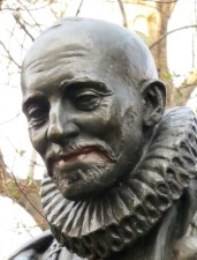Who can help you go through your exams with relative ease? For years now, Parisian students think they know it.
Opposite the Sorbonne, the oldest university in Paris, the bronze statue of writer-philosopher Michel de Montaigne (1533 –1592) is located. He is best known for the skeptical saying ‘What do I know?’.

For many French scholars, the ideas from his extensive collection ‘Essays’ are mandatory curriculum. In these famous reflections Montaigne explores a wide range of questions and topics related to life: from friendship to fear, from moderation to cannibalism, from passion to death.
He looks within himself, examines human condition and seeks answers to the question ‘How to live’.
For that time and age, he does self-examination in a unique, almost modern way, focusing on practical wisdom.
Touching the right foot of the amiable looking Montaigne on the Paul-Painlevé square in Quartier Latin is considered to be the secret weapon for study success, so it is especially a ‘must’ for students with pre-exam nerves.
The 1989 statue is actually a bronze replica of the 1934 stone original from sculptor Paul Landowski (1896-1961). That statue has not survived vandalism and the student revolts of the sixties of the last century.

Photo: philosopherinthecity.com
For instance, Montaigne was painted with black hair and red lipstick. Finally, his right foot succumbed to the many touches and broke off.
The bronze of the current statue is dull, but the right foot is and remains a shiny copper yellow. Moreover, if you look closely, you can discover red lipstick on this statue, although wiped.

